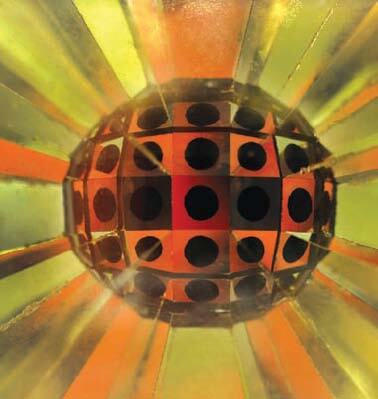A new approach combines the advantages of photovoltaic technology and solar-thermal technology in a device the size of a fingernail

Each of the two most common ways to utilize solar energy has its drawbacks. The photovoltaic cells, which capture photons of sunlight and convert them into electricity, have an efficiency of only 20%. This is because they are only able to utilize photons in a narrow range of wavelengths to excite electrons. Solar-thermal systems, which convert sunlight into heat and heat into electricity, are more efficient because they use the entire light spectrum and thus reach a utilization of 30%. However, they cannot be reduced for use on the roof of a house. Typical solar-thermal systems include extensive arrays of mirrors that focus sunlight and heat a fluid, which ultimately drives a turbine to generate electricity. [The common solar boilers in Israel are content with heating water, and do not produce electricity - the editors.]
To overcome the limitations of both methods, researchers at the Massachusetts Institute of Technology (MIT) created a device that combines features of both and described it in the February 2014 issue of the journal Nature Nanotechnology.
The device, which is the size of a fingernail, is called a thermo-photovoltaic solar device. In the first stage, the device produces heat from sunlight. This is done using carbon nanotubes, which absorb sunlight very efficiently and convert almost its entire spectrum into heat. The heat passes to a photonic crystal, which consists of layers of silicon and silicon dioxide. When the crystal reaches a temperature of about 1,000 degrees Celsius, it begins to emit and emit photons, most of which are exactly the right wavelength for the photovoltaic cell installed below it. When the photons hit this photovoltaic cell electricity is created.
The process of converting light to heat, back to light and finally to electricity, is not simple. So far, the device has reached a utilization rate of only 3%. But "this is just the starting point," says the paper's lead author, Evelyn N. Wang. The key to progress will be to scale the device. "If we can do that," says Wang, "we can achieve a survival rate of more than 20%."
The article was published with the permission of Scientific American Israel
